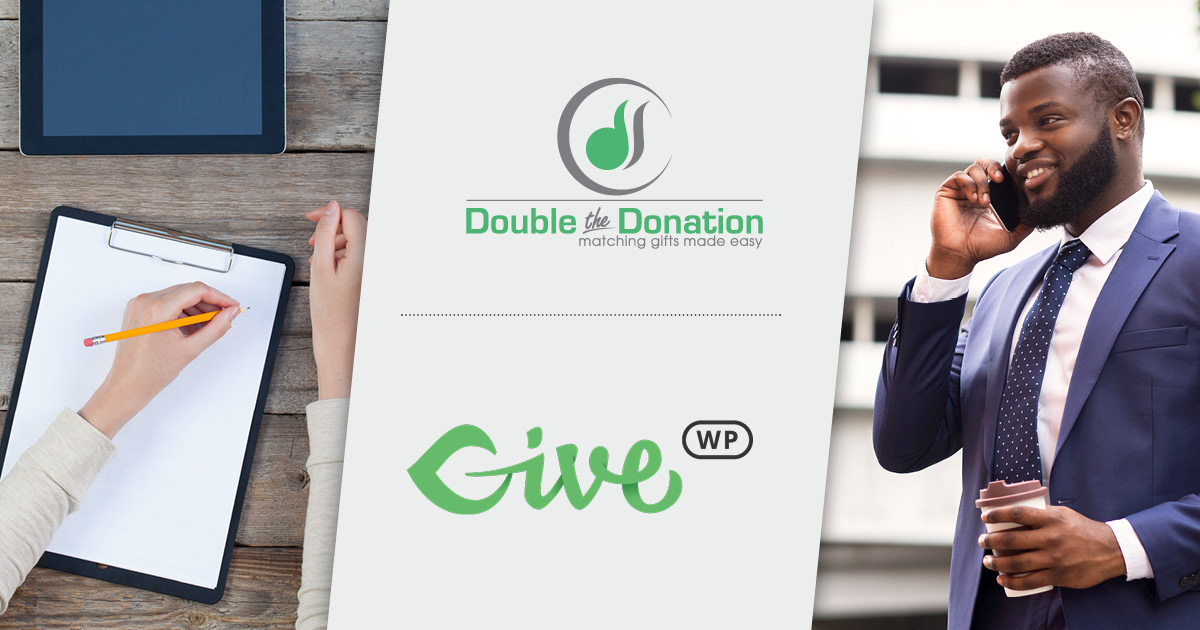Did you know that research studies show only 25% of online-only first-time donors are retained for more than a year after their initial gift? That’s a shame—especially when you consider that these individuals likely have a passion for your cause, given they donated to your efforts in the first place.
One of the most significant reasons for nonprofits facing high churn rates has to do with the fact that donors are not feeling appreciated for their contributions or engaged with the mission. An organization ramping up its donor appreciation efforts can go a long way in overcoming both of these challenges.
That’s why we’ve put together this list of our nine favorite ways to say thank you to nonprofit donors. These include:
- Incorporating email follow-ups.
- Sending handwritten notes.
- Conducting personal phone calls.
- Utilizing digital donor walls.
- Constructing physical donor walls.
- Sharing updates on mission progress.
- Showing appreciation for all kinds of support.
- Communicating beyond donation asks.
- Hosting donor appreciation events.
Most successful nonprofits know that attracting new donors is merely one piece in a larger fundraising puzzle. Developing relationships with those individuals over time is one of the best ways to ensure consistent and long-lasting support—and it all starts with a genuine “thank you.”
Ready to find out how to strengthen your donor relations and improve the donor journey by prioritizing appreciation in your efforts? Let’s jump in with one of the most popular ways for nonprofits to say thanks!
1. Incorporate email follow-ups.
Email follow-up acknowledgments are likely the #1 method used by nonprofits to thank donors for their support. And there’s a reason why that’s true—it’s a quick, low-cost, and entirely scalable form of communication.
However, it’s also one of the most depersonalized strategies for communicating appreciation to donors. To mitigate the concern, it’s a good idea to ensure your email follow-up messages address the donor personally by their first (or preferred) name and acknowledge the specific gift they contributed. You can even utilize email templates, so long as they’re customizable and well-written!
All in all, we do recommend incorporating email as a portion of your donor appreciation plan—it just shouldn’t be the only thing you do.
2. Send handwritten notes.
A handwritten thank-you letter is one of the most traditional ways to show gratitude, and it remains a meaningful source of communication to this day. It can include a lot of the same written content as an email, just in a handwritten form for a more personal touch!
If you don’t have the time or the resources to devote to manually penning thank-you notes for each donor, a printed letter can also suffice. If you decide to go that route, it’s worth it to take the time to sign those printed notes by hand.
And remember, be sure to sign your letter from a specific person (e.g., Tom Maverick, Cat Rescue Club President) rather than the organization (Cat Rescue Club).
Amplify your fundraising with a GiveWP Plan
3. Conduct personal phone calls.
Consider picking up the telephone to thank your donors for their contributions to your organization and its specific fundraising efforts! Though many organizations lack the time to phone each and every donor, you might consider the option for major (or even high-mid-level) contributors. After all, this is just about the most personal you can get besides having a face-to-face conversation.
Keep in mind, however, that not everyone will want to pick up a phone call to discuss their donations, even if it’s in an appreciative manner. If this is the case, you might want to make a note of (and respect!) donors’ communication preferences and keep the calls to those who appreciate them.
4. Utilize digital donor walls.
A digital donor wall takes the idea of a traditional donor recognition display and brings it to the internet. Donors love seeing their names highlighted in a public area, and the existence of such a wall can even motivate new supporters to contribute as well.
With a digital wall, organizations receive additional benefits such as the immediacy with which new donors can be included, a significantly wider audience that’s able to engage with the display in the first place, and an unlimited number of individuals able to be incorporated.
5. Construct physical donor walls.
If you’re looking for a way to recognize donors in a physical space, a tangible donor wall might be a good choice for your organization. Similar to a digital donor wall, significant donors are able to be highlighted in a public space for their contributions to your cause or to a specific campaign.
The drawbacks to a physical wall compared to a digital one, however, are its permanence, limited space for donors to be highlighted, and limited scope of who will actually see the physical display in the first place. But if you have a highly-trafficked building within your organization (such as a school or hospital), this can be a great way to highlight donors and inspire additional generous giving.
6. Share updates on mission progress.
More than likely, donors give because they care about your organization and its mission. Thus, communicating the impact that your organization is having on its mission, made possible by generous donor dollars, is a great way to say thanks.
Consider doing so by sharing stories of individuals and communities benefiting from your nonprofit’s services. You might even include some photos of your organization in action (with the permission of any beneficiaries, of course).
Another similar idea is to provide milestone updates on particular fundraising campaigns and goals. For example, if a donor gives to an organization’s end-of-year fundraiser with a lofty goal of $100,000, they’d likely be interested to know when you’ve surpassed the intended amount. After all, they played a direct role in the objective being met in the first place.
7. Show appreciation for all kinds of support.
As your team is putting these ideas and more into action, make sure you’re not neglecting any segment of your organization’s support network. This should include givers of all donation sizes, non-monetary donors, volunteers, peer-to-peer fundraisers, and many more.
Then, if an individual goes above and beyond their typical role (such as a donor requesting a matching gift from their employer or a volunteer securing a volunteer grant on your behalf), you’ll want to ensure your gratitude reflects that.
What you don’t want to do is reserve your organization’s appreciation for only a certain tier of donors. As you know, every dollar counts—so you want to ensure your supporters are acknowledged at every level.
8. Communicate beyond donation asks.
If the only time a donor ever hears from your team is when you’re asking for another donation, they may feel the relationship is entirely transactional—and will hardly feel appreciated for their support.
According to this blog post,
“Don’t make every interaction an appeal. Share other resources or information with donors. Update them on goals or important work you’ve accomplished that year.”
When individuals receive additional communications beyond requests for funding, they can begin to feel like a key part of your organization’s team (which they are!), rather than just a means to an end. Luckily, some of the other ideas incorporated in this list can help your team prepare for more non-donation-focused communications.
9. Host donor appreciation events.
Most nonprofit supporters enjoy attending charity events for the causes that they care about. Perhaps they’ve attended a number of fundraising events with your organization in the past.
Now, it’s time to host a donor appreciation event. Instead of the focus of the event being to raise additional funds for your mission, make sure to emphasize your gratitude for the dollars (or time and resources) they’ve contributed to your cause already.
Some of our favorite event ideas include carnivals and festivals, dinner parties and galas, concerts and other performances, and more.
These might be exclusive events for donors, or they might be open to the public. If it’s the latter, make sure to provide your donors with free tickets and recognize them for their support. This will enable them to stand out from the crowd and further communicate how much their aid assists your organization.
Retain Lifelong Supporters
You likely know that retaining a lifelong mission supporter is significantly more cost-effective than continually identifying and soliciting one-time donors for your fundraising efforts. And for many nonprofits, that’s a top reason why donor appreciation is so important.
But beyond that, you also don’t want to forget that your donors are real people who deserve the gratitude for their assistance in driving forward your cause. Genuine appreciation for your dedicated donors’ support lays a strong foundation for healthy nonprofit-supporter relationships going forward. Plus, your financial standing typically benefits as well.
So, choose your favorite ways to thank your supporters and begin incorporating new ideas into your engagement strategy. Good luck!
Like What You're Reading? Subscribe Here!
Newsletter Opt-in
About the Author




